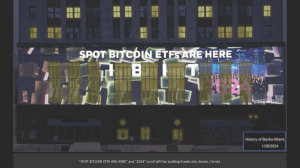If you’ve never heard about ‘no code’ blockchain solutions, putting these into proper context is a good way to get started understanding the potential for these types of new tools in the business world.
First of all, the blockchain is quickly becoming a popular innovation for not only financial transactions but many different types of data processing. Yes, you can use the blockchain as an immutable ledger for keeping track of decentralized coins, but you can also use it to verify anything else.
For example, blockchain solutions can help with underwriting insurance policies, safeguarding and distributing medical information, or detailing the operations of web servers.
In addition, there’s the new application of blockchain to non-fungible tokens and digital asset ownership. As we start seeing more of these functions in action, the financial world is adapting to a new reality where the blockchain is an integral part of a framework.
The Role of No Code Blockchain Solutions
So why is no code blockchain functionality important?
Essentially, it’s because no code setups allow fewer technical users to deploy blockchain functions without understanding how to code them.
Using a no-code application for a blockchain involves taking a prebuilt modular set of code, and putting it into an interface where it will facilitate something like a transaction or data verification.
Here’s a simple way to think about the evolution of no-code: take the raw HTML code used to build Internet pages and sites, and how that led to the development of no-code HTML tools.
In the early days, programmers had to write those pages in HTML by hand.
Then came Dreamweaver and other tools that allowed non-coders to simply drag-and-drop elements of HTML in order to build pages and sites visually.
No code blockchain solutions are a lot like that – those premade code modules are the building blocks for deploying new blockchain opportunities without hand-coding everything. It’s an essential abstraction of a technical process and a philosophy of repeatable code that replaces line-by-line writing with customized toolsets.
APIs and No Code Blockchain
Another type of analogy that may help beginners to understand no code blockchain solutions is the application programming interface or API.
If you ask an expert, they’ll tell you that APIs are tools that allow pieces of software to communicate with each other. But in a very key sense, APIs are also an abstraction in the same way that no code HTML or no code blockchain tools are. They’re building blocks that are premade to facilitate a technical task – and they can be deployed easily by non-technical users. In the case of the API, the tool is basically a set of instructions and an environment in which to deploy those, to “bridge” connections between two (or more) disparate systems.
Infrastructure and Environment
Third-party providers and industry disruptors are coming up with no code blockchain tools and solutions that are versatile and accommodate the agile design.
For instance, combining content management with NFT-related decentralized applications allows for different kinds of transactions and management related to non-fungible tokens, which are essentially a new type of asset tokenization for intellectual property.
That’s at the core of the Unifty system, which uses an environment including top exchanges like Binance, top blockchain management environments like Polygon, and transfer schemes like UniSwap and PancakeSwap, as well as communication platforms like Telegram and Discord for the purposes of reaching an end-user audience and maintaining a community around the system.
Building NFT swap tools and more in a no-code blockchain format, Unifty is helping to usher in that new era of easy and fast crypto and blockchain deployment, as end-users see more on-ramps built into their digital lives. It’s an exciting time to be involved in this kind of work, and vanguard platforms like Unifty are quickly redefining what it means to handle assets.
In conclusion, taking a no-code approach to the blockchain means providing the easy modular solutions that will power the defi apparatus of the future. Look for this type of “blockchain as a service” software approach to emerge from major service providers and vendors as the age of the blockchain really takes off.
Disclaimer: This article is provided for informational purposes only. It is not offered or intended to be used as legal, tax, investment, financial, or other advice

















